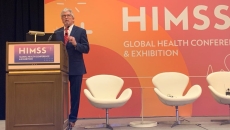Electronic Health Records (EHR, EMR)
Advocate Health uses a FHIR-enabled integration with its electronic health records to get customized information to patients before, during and after more than 200,000 annual well-child exams – achieving a 30% lift in patient engagement.
In a HIMSS25 interview, a consultant specializing in the Electronic Medical Record Adoption Model walks through the process and discusses plans for the hospital to hit Stage 7.
The electronic health record, called IntelliCare, uses the latest AI technology with the aim to enhance workflows and optimize operations for health systems undergoing rapid digital transformation.
Its third-party service providers cannot assure compliance with their data sharing contracts, the Public Service Commission also noted.
With a chance to avoid the costliest factors of electronic health records, rural hospitals and clinics in Northeast Indiana chose to gain the benefits of better patient and provider experiences as Parkview Community Connect partners.
The 'agentification' of health IT that integrates AI and automation is enabling a real-time reimagining of practice operations, workflows and the patient-provider experience, the EHR vendor president says.
Helen Waters previews a host of technologies the EHR giant will be showcasing in its booth and in educational sessions. They include generative AI, intelligent search and Meditech-as-a-Service.
The company is focused on "completely reinventing" its EHR into a "system of intelligence that helps health systems drive efficiency, improve clinical care, accelerate innovation and reduce costs," says General Manager Seema Verma.
At HIMSS25 Denise Dauterman, Epic Clinical Systems Lead and Deborah Jacques, informatics nurse specialist, will share how they engaged nurses in implementing EHR modules that reduced redundant and non-meaningful documentation at NYU Langone Health.
HIMSS25 Europe
For many healthcare organisations, the path forward on their digital transformation journey can seem overwhelming. HIMSS's ddigital mmaturity mmodels can help.









